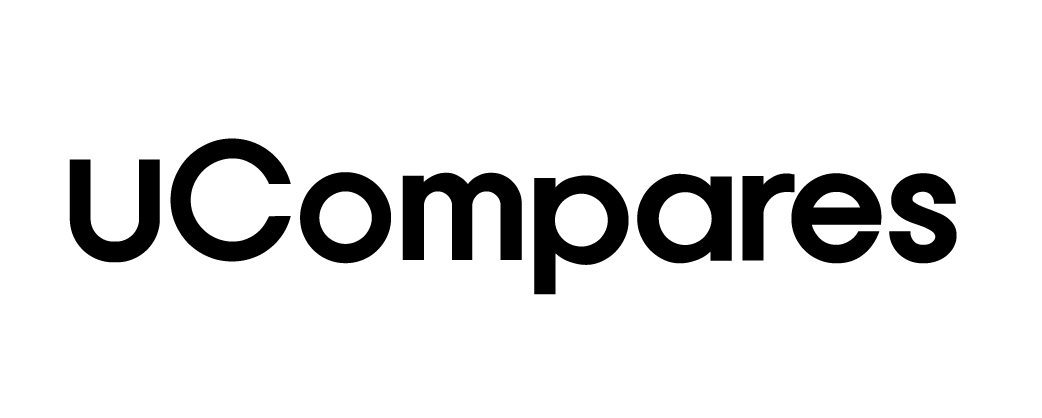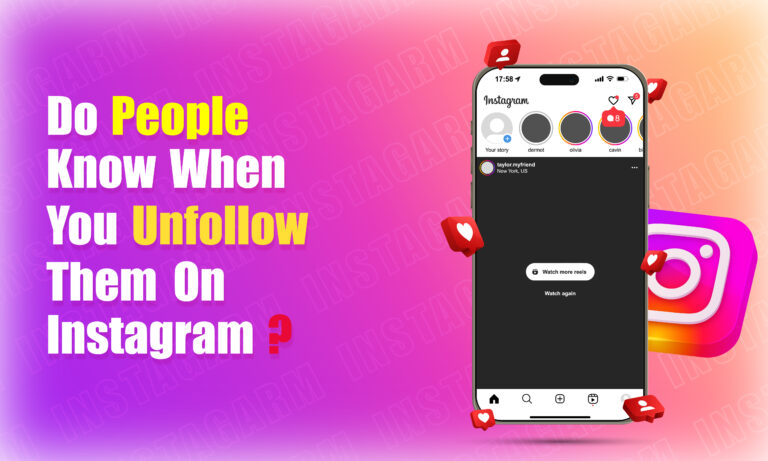When managing social media, users often wonder if people are notified when they unfollow them on Instagram. While Instagram’s design doesn’t provide direct notifications to users about being unfollowed, there are various signs, indirect notifications, and external applications that allow users to track unfollows. Understanding these aspects can clarify what happens when you unfollow someone on Instagram.
This article addresses the question, “Do people know when you unfollow them on Instagram?” and explores Instagram’s notifications, privacy considerations, user tracking methods, and the psychology behind unfollowing on the platform.
Instagram’s Notifications and User Experience
Instagram does not notify users when someone unfollows them. The platform prioritizes user privacy, ensuring that unfollow actions remain discrete. Instead of direct notifications, Instagram provides more general notifications for likes, comments, follows, and story interactions, focusing on engagement rather than disconnections.
The absence of unfollow notifications reflects Instagram’s design to encourage a positive user experience. By avoiding negative notifications, Instagram minimizes potential conflicts and prevents users from becoming overly concerned with follower fluctuations.
How Do People Track Unfollowers on Instagram?
Though Instagram does not notify users of unfollows, several methods and tools allow users to discover who unfollowed them.
Manual Tracking of Followers List
A straightforward way for users to know if someone unfollowed them is by manually checking their followers list. If they suspect a specific account has unfollowed them, they can search for that account in their follower list.
-
- How It Works: The user goes to their profile, taps “Followers,” and searches for the suspected unfollower.
- Efficiency: This method is only practical for users with a small number of followers or for identifying specific accounts. It’s less effective for accounts with thousands of followers.
Third-Party Apps and Software
Some users choose to install third-party applications to track unfollowers. These apps usually require access to Instagram data, allowing them to provide detailed follower and unfollower insights.
-
- Popular Apps: Commonly used unfollower tracking apps include “FollowMeter,” “Followers Tracker Pro,” and “Unfollowers & Ghost Followers.”
- Functionality: These apps offer features like follower growth analytics, ghost followers tracking, and unfollower notifications.
- Privacy Concerns: Instagram’s policies discourage using third-party apps. Such apps can compromise account security, potentially resulting in suspension for policy violations.
Instagram Insights for Business Accounts
For Instagram business accounts, Insights offer follower count trends but do not display specific users who unfollowed. Instead, users can monitor overall follower growth and decline, which indirectly indicates unfollows.
-
- Features: Instagram Insights provide metrics such as “Followers Gained” and “Followers Lost.”
- Limitations: Business Insights do not reveal individual accounts that unfollowed; they only provide a numerical overview.
- Benefits: Business accounts can assess the success of their content strategies and identify potential declines in follower interest.
Social Media Monitoring Tools
Advanced social media monitoring tools like “Sprout Social” and “Hootsuite” offer analytics that track overall follower trends and engagement rates. These tools cater to businesses and influencers who want comprehensive insights without violating Instagram’s policies.
-
- Tracking: Tools provide follower change rates and engagement metrics.
- Cost and Accessibility: Some tools require subscriptions, making them accessible primarily to businesses and influencers.
- Data Accuracy: Monitoring tools offer accurate, policy-compliant insights for Instagram growth tracking.
The Psychology Behind Unfollowing on Instagram
The concept of unfollowing on social media is often driven by personal, social, or content-related reasons. Understanding these motivations can help users make mindful choices on who to follow and unfollow.
Content Relevance
Users often unfollow accounts that no longer align with their interests or content preferences. As content priorities shift, users tend to refine their following lists to maintain a feed that reflects their current interests.
Social or Personal Disconnect
When relationships change, users may unfollow accounts as a way of symbolizing a social or personal disconnection. Unfollowing may signal a reduction in closeness or a shift in social circles.
Content Overload or Spam
Accounts that post excessively or share irrelevant content may prompt followers to unfollow. This often occurs with accounts that post promotional or spam-like content.
Negative Interactions or Conflicts
Disagreements or conflicts on social media can lead users to unfollow accounts as a way of managing their online space and avoiding negative interactions.
Privacy and Content Moderation
For personal privacy, users may unfollow accounts to limit their interactions or avoid exposure to certain types of content, especially if they find the content intrusive or unwelcome.
Effects of Unfollowing on Engagement and Social Dynamics
Unfollowing someone on Instagram can have social, engagement-related, and algorithmic effects. While unfollowing does not notify the user directly, it affects the interactions and visibility of content.
1. Reduced Engagement on Posts
When an account unfollows another, posts from the unfollowed account are less likely to appear in the follower’s feed, reducing engagement on that account’s content.
- Effect on Reach: Lower engagement may reduce the visibility of posts from unfollowed accounts.
- Engagement Levels: Influencers and brands often monitor follower activity closely, and unfollowing can signal a need for content adjustments.
2. Algorithmic Influence on Content Visibility
Instagram’s algorithm prioritizes engagement. When a user unfollows an account, it may decrease that account’s chances of being featured in “Explore” or other recommendation sections for similar users.
- Algorithm Impact: Lower follower interaction can impact visibility, reducing exposure to new audiences.
- Content Adaptation: Creators may adjust their content strategy if they observe significant unfollowing patterns.
3. Social Implications in Personal Connections
Unfollowing may have social repercussions, particularly among friends or family. Some individuals may notice the unfollow, potentially leading to social tension.
- Personal Reaction: Some users may take unfollowing personally, leading to misunderstandings.
- Conflict Avoidance: To avoid potential conflicts, users may mute accounts instead of unfollowing, allowing them to maintain the connection without seeing updates.
Alternatives to Unfollowing on Instagram
For users who want to limit content visibility without fully unfollowing, Instagram provides options that allow them to moderate content exposure while retaining connections.
Mute Feature for Stories and Posts
The mute option allows users to stop seeing updates from a particular account without unfollowing it.
-
- How to Mute: Go to the user’s profile, tap the “Following” button, and select “Mute.”
- Effect: Muting keeps the user in your followers list but hides their posts or Stories from your feed.
Restrict Feature for Privacy Control
Restricting an account limits its ability to interact with your content without unfollowing or blocking them.
-
- How to Restrict: Go to the user’s profile, tap the three dots, and select “Restrict.”
- Privacy Benefits: Restricted accounts cannot see when you’re active, nor can they see if you’ve read their messages.
Limit Notifications for Reduced Visibility
Turning off post or Story notifications for specific users allows you to limit interactions without fully unfollowing.
-
- How to Turn Off Notifications: Go to the user’s profile, tap the “Following” button, and select “Notifications.”
- Effect: Disabling notifications reduces unwanted engagement while retaining the connection.
Close Friends List for Story Sharing
The “Close Friends” feature lets users share Stories with a select group, offering a private alternative for Story-sharing without requiring an unfollow.
-
- How to Use Close Friends: Tap the “Close Friends” option when sharing a Story, selecting specific users.
- Effect on Privacy: This feature allows users to manage Story visibility, enhancing privacy for selective sharing.
Blocking for Complete Disconnection
If unfollowing or muting does not suffice, blocking provides complete disconnection from a user.
-
- How to Block: Go to the profile, tap the three dots, and select “Block.”
- Outcome: Blocking removes the account from followers and prevents any further interactions or visibility.
Privacy Considerations When Using Third-Party Unfollow Tracking Apps
Using third-party applications to track unfollows raises privacy and security concerns, especially as Instagram’s terms of service prohibit the use of unauthorized apps that access user data.
Data Privacy Risks
Third-party apps often require users to provide Instagram login credentials, which can lead to unauthorized access or misuse of personal data.
Account Suspension Risk
Instagram actively monitors and restricts accounts using unauthorized apps, which can lead to temporary or permanent suspension for policy violations.
Recommended Alternative Tools
Users seeking insights on followers should consider authorized tools, such as Instagram’s own business Insights for follower analysis, to avoid privacy and security risks.
Use Instagram’s Built-In Tools
Instead of unauthorized apps, users can rely on Instagram’s business tools or manual checks to monitor follower growth trends.
The Impact of Unfollowing on Instagram Metrics and Engagement
Unfollowing directly influences engagement metrics on Instagram, affecting how content is distributed and perceived by both the algorithm and followers.
Lower Engagement Metrics for Content Creators
When users unfollow a content creator, it reduces the likelihood of the creator’s posts appearing in other users’ Explore pages. Lower engagement can lead to reduced reach, which is particularly significant for influencers and businesses.
Impacts on Brand Strategy for Business Accounts
For business accounts, a high unfollow rate can indicate a need for strategy adjustments. By analyzing engagement data, businesses can identify content areas for improvement, thereby reducing the unfollow rate over time.
Conclusion
In summary, Instagram does not directly notify users when they are unfollowed, providing a degree of privacy to the action. However, users can still track unfollowers through manual checks, third-party apps, or social media monitoring tools. Alternatives to unfollowing, such as muting, restricting, and using the Close Friends list, allow users to moderate content visibility without severing connections. Understanding the psychological motivations behind unfollowing and its effects on engagement can help users make mindful decisions about following and unfollowing, creating a more enjoyable Instagram experience.
Frequently Asked Questions (FAQs)
Can someone see if I unfollow them on Instagram?
No, Instagram does not notify users when someone unfollows them, maintaining privacy around follower actions.
Are there any apps to track unfollowers on Instagram?
Yes, there are third-party apps like “Followers Tracker Pro” and “FollowMeter” that track unfollowers, but these apps pose privacy risks.
What is the mute option on Instagram?
The mute option allows users to stop seeing updates from specific accounts without unfollowing them, helping manage feed content.
Can using third-party apps to track unfollowers cause account suspension?
Yes, Instagram’s policies prohibit unauthorized apps, and using them can result in account suspension due to policy violations.
How do I avoid seeing unwanted posts without unfollowing?
Instagram offers alternatives such as muting, restricting, and using the Close Friends list, enabling selective content visibility without unfollowing.



